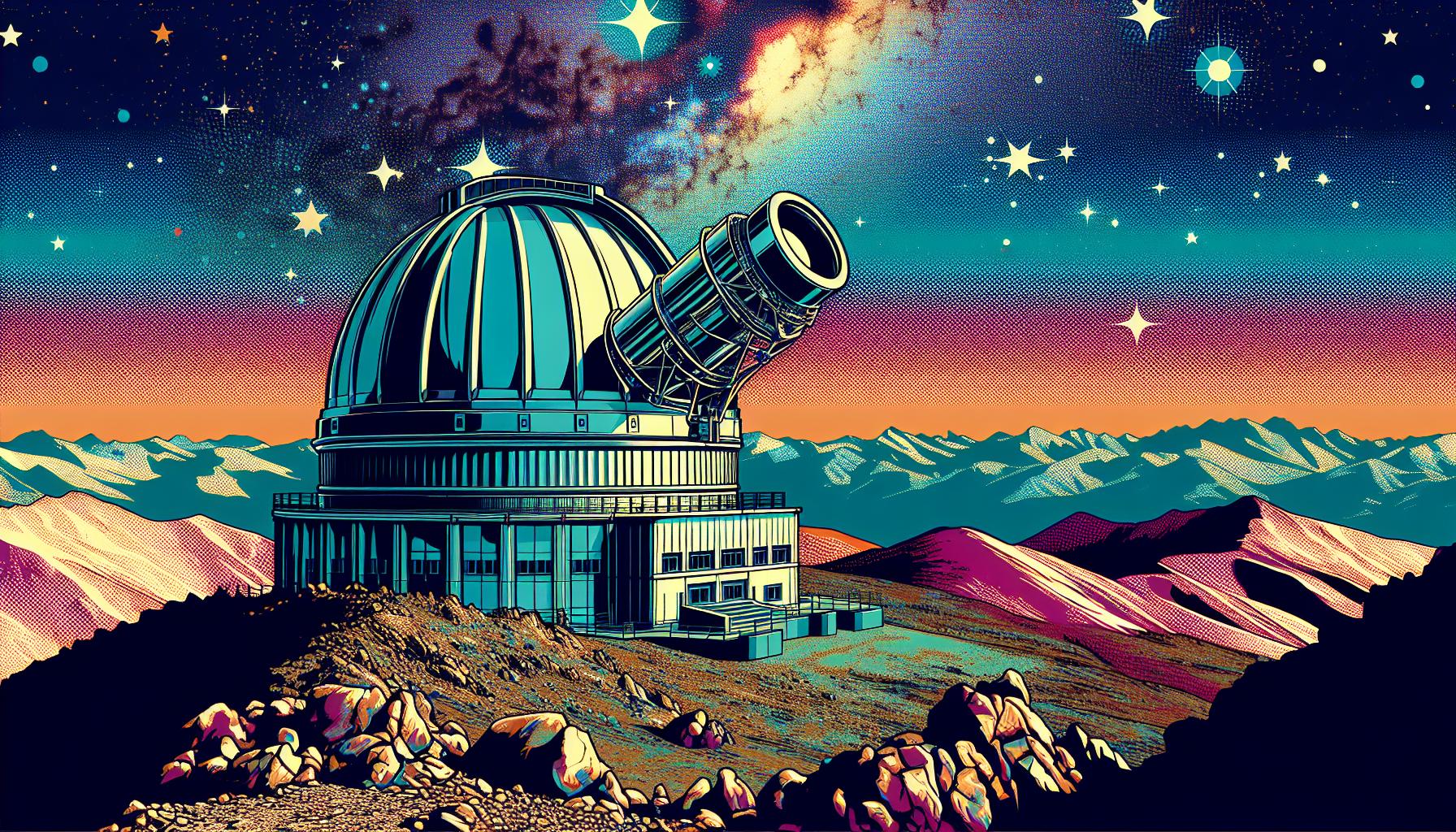This site contains affiliate links to products. I may receive a commission for purchases made through these links.
Ever gazed up at the night sky and wondered what’s out there? I sure have, and that’s why I’m fascinated by observatory designs. These architectural marvels are more than just buildings; they’re gateways to the cosmos, allowing us to peer into the farthest reaches of the universe.
There’s a lot that goes into creating an observatory. It’s not just about constructing a dome and placing a telescope inside. The design must consider factors like location, light pollution, and even the type of celestial bodies to be observed. That’s why I’m excited to delve into the world of observatory designs with you. Let’s explore together!
The Importance of Observatory Designs
Stepping into an observatory, you’re instantly transported to an environment specifically engineered to make you feel closer to the cosmos. It’s a design intentionally crafted to bridge our mundane realm with the infinite expanse overhead. To underscore this, let’s delve deeper into the importance of observatory designs.
A crucial aspect of any successful observatory design is location. The site selection influences not only the building’s design but also its purpose. Near urban settings, observatories require features that can compensate for light pollution – think advanced tech and specialized materials. However, in rural or elevated regions where the skies are clearer, observatories can afford to prioritize aesthetics or visitor comfort without compromising on celestial visibility. Either way, the observatory acts as a shield, protecting our delicate experience of stargazing from external adversities.
Next up – an often overlooked yet critical element – interior design. Every corner of an observatory, from the viewing platform to the waiting areas, is planned to enhance visitor experience. Kicking it up a notch, architects are now integrating features like digital displays and interactive exhibits. These state-of-the-art additions provide in-depth knowledge, making astronomy more accessible and appealing to the wider public.
Finally, let’s touch upon architectural design. Glancing at any observatory, you’ll notice the dome – its iconic feature. Designing this is no small feat. It needs to neatly house the telescope while allowing for maximum possible sky coverage. Modern designs have automated this process, enabling the dome to shift and align with the telescope’s focus.
There’s so much more to the humble observatory than meets the eye. If you ever find yourself under its protective canopy, take a moment to appreciate the sheer wizardry of engineering and architecture that facilitates your cosmic rendezvous. As we continue our exploration, I can guarantee there’ll be more astonishing facts and figures to discover. The journey’s just begun – so let’s press on.
Factors to Consider in Observatory Design
In the domain of observatory design, there are significant factors that can’t be ignored. Foremost among these is the location. In high-density urban environments, light pollution is a serious issue. As a result, the designs need to factor in this pollution while ensuring that the observatory still serves its core purpose.
Interior design is another aspect that is easily overlooked yet plays a critical role in enhancing the visitor experience. Modern observatory designs incorporate interactive exhibits, digital displays, and other high-tech features. These components are aimed at fostering a deeper appreciation and understanding of astronomy.
Consider this table showing the impact of some key factors on observatory design:
| Factors | Impact of Factors |
|---|---|
| Location | Determines the need for light pollution mitigation strategies |
| Interior Design | Significantly affects visitor experience and learning |
Observatories aren’t just about the telescope; the observatory dome is equally important. This dome houses the telescope and must be designed in a way that allows for maximum sky coverage. The telescope itself is of course a crucial component, with its requirements and specifications guiding a large part of the design process.
In more rural locations, there’s flexibility to explore aesthetic considerations in observatory design. Aesthetics coupled with visitor comfort can then take a front seat.
Remember, every aspect of an observatory’s design can vastly affect how it functions and serves its audience. From managing light pollution in cities to maximizing visitor engagement in more remote locations, there’s truly a lot that goes into creating these incredible spaces. The engineering and architecture involved are worth appreciating in their own right. The significance of an observatory goes beyond its primary purpose, extending to the environment it creates for its visitors.
Location and Site Selection
One of the most crucial aspects of observatory design is selecting the right location. Now, location isn’t just about geography—it also relates to the surroundings and regional conditions, directly impacting the usefulness and effectiveness of the observatory.
In urban areas, observatories face the challenge of light pollution. It’s a significant problem as city lights often outshine stars, making it tougher to observe celestial bodies. To tackle this, observatories in urban areas need specific design elements that compensate for the increased light levels.
Features such as specially designed telescope lenses or structures shielding from city light are common. The site should be elevated, if possible to take advantage of the reduced atmosphere high above the city.
The competition of light pollution is not the only concern for location selection. Even in rural areas, where light pollution is less of an issue, careful consideration of environmental conditions is paramount. Factors such as altitude, humidity, wind patterns, and even local wildlife may impact the design.
| Factor | Consideration |
|---|---|
| Light pollution | Urban vs. rural location |
| Environmental conditions | Altitude, humidity, wind patterns, local wildlife |
An ideal observatory location balances astronomy needs with visitor comfort and safety. There’s no one-size-fits-all answer here—every locale and design comes with a trade-off.
So far, we’ve shone a light on the challenge of finding the right location. Next, let’s delve into how the site’s natural and built elements combine in the design of the observatory. This conversation will lead us to the intricate relationship between architectural design and engineering, demonstrating how these collective decisions impact the visitor experience.
Dealing with Light Pollution
As we delve deeper into the realm of observatory design, it’s impossible to ignore the elephant in the room: light pollution. In urban settings, excessive artificial lighting from nearby cities and commercially intense areas can interfere with the clarity of celestial objects. Light pollution is perhaps the most disruptive factor affecting observatories, especially those situated within or near populated zones.
When designing an observatory, specific measures have to be put in place to mitigate light pollution. A commonly employed method is to position the observatory as high as possible above the city lights. This is the reason why some observatories, such as the famed Griffith Observatory in Los Angeles, are located on mountains or high hills.
Another method is to use advanced technology. High-quality telescopes equipped with light filters can decrease the effects of stray light. By selecting those specific wavelengths of light that correspond to astronomical observations, we absolve observational difficulties caused by pollution.
Despite these challenges, urban observatories hold a critical role. They inspire and engage the public in space sciences. After all, not everyone can make it to remote mountaintops to peer through the world’s most powerful telescopes. For millions of city dwellers, these urban observatories offer their only portal to the vast universe beyond our own planet.
The battle against light pollution is a tough one. Yet, it’s an essential part of observatory design. Taking these factors into account, architects and engineers work closely to design structures that minimize adverse effects from light pollution and thus maximize the chances for everyone to gaze at the cosmos with wonder and awe.
In the next section, we will look at the importance of environmental considerations in orchestrating a well-rounded, efficiently functioning observatory. From altitude to humidity, wind patterns to local wildlife, there’s plenty to ponder on this critical aspect of observatory design.
Designing for Different Celestial Bodies
Having established the significance of location for observatories, let’s delve into something equally important: designing for various celestial bodies. This factor has a significant bearing on design decisions, given the diverse astronomy objects we desire to observe.
Designing for the sun, comets, asteroids, stars, galaxies, or even exoplanets each poses unique challenges and requirements. As an example, Solar observatories are specifically designed to study the sun. They typically feature solar telescopes equipped with filters to protect sensitive equipment and observers’ eyes from the sun’s intense light. Additionally, these observatories are often placed at high altitudes where the air is thinner and less turbulent for clearer observations.
If our focus drifts from our sun to Deep Space Objects like galaxies, nebulae, or star clusters, the demands change drastically. In this case, the observatories need to be equipped with telescopes that are capable of long exposure imaging. This allows for the capture of light over extended periods, necessary due to the extreme distances these objects reside at. High resolution and light-sensitive equipment are indispensable here.
Moreover, some observatories are designated for the study of Transients and Variables, sky phenomena that change over time such as supernovae, variable stars, and comets. These observatories need to be able to scan large portions of sky quickly and frequently.
Undoubtedly, while all these considerations factor into the design of an observatory, there is no one-size-fits-all solution. Each project presents its own unique set of challenges and requirements that need to be tailored to. Reflecting on these aspects underscores the sheer complexity involved in designing these masterpieces of modern science and technology.
Conclusion
I’ve delved into the intricacies of observatory designs, underscoring the crucial role of location and environmental factors. It’s clear that urban settings demand innovative solutions to tackle light pollution. Meanwhile, altitude, humidity, wind patterns, and even local wildlife can all influence the choice of site for an observatory.
Moreover, the design must cater to the unique needs of studying different celestial bodies. Whether it’s the sun, deep space objects, or transients and variables, each presents its own set of challenges. So, it’s not just about building an observatory, it’s about crafting a tool that can effectively probe the mysteries of the cosmos.
In essence, the complexity of observatory design is a testament to our relentless pursuit of astronomical knowledge. It’s this intricate process that enables us to gaze deeper into the universe, fostering a greater understanding of our place within it.
Frequently Asked Questions
Why is the location crucial in observatory design?
The location dictates the design of an observatory due to variations in light pollution and environmental conditions. Urban locations require designs that counterbalance light pollution, while environmental conditions like altitude, humidity, wind patterns, and local wildlife also influence the design.
What needs to be considered when designing an observatory for different celestial bodies?
When designing observatories for different celestial bodies like the sun, deep space objects, and transients/variables, each presents unique challenges and requirements. This diversity necessitates careful consideration of the design for successful astronomical studies.
Is observatory design a complex process?
Yes. As the article outlines, the design of observatories is a complex process due to varying environmental factors, challenges presented by different celestial bodies, and the need to account for atmospheric anomalies like light pollution.
Why consider factors like humidity, wind, and wildlife while choosing a location for an observatory?
Humidity, wind, and wildlife affect the functionality and durability of an observatory. For instance, high humidity can cause condensation on instruments, wind patterns can interfere with stability, and local wildlife can pose threats to the infrastructure.
What challenges does an urban setting present in observatory construction?
Urban settings have high levels of light pollution, interfering with celestial observations. Therefore, observatory designs must incorporate specific features to compensate for these challenges. These could include advanced filters or telescope positioning techniques.




